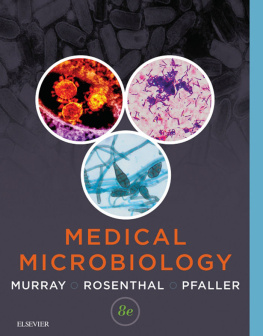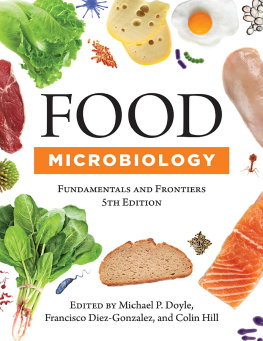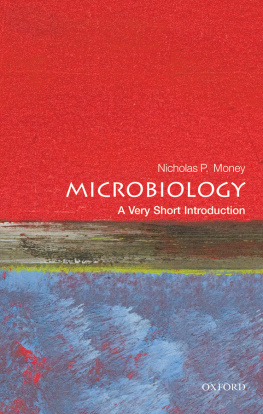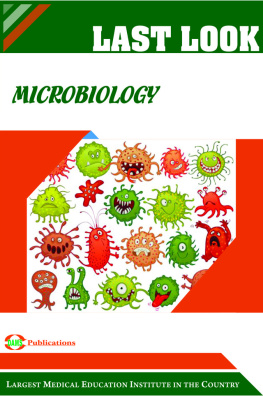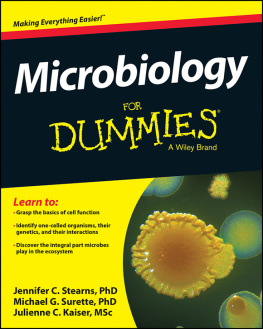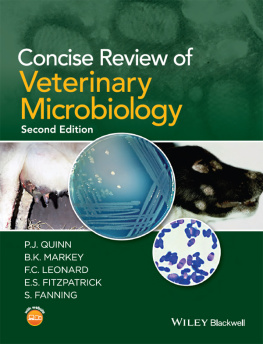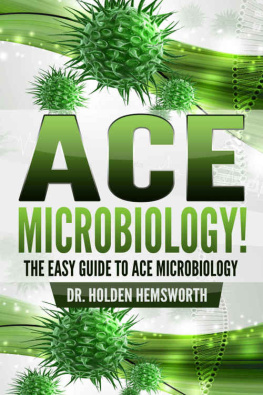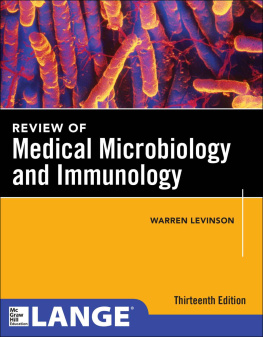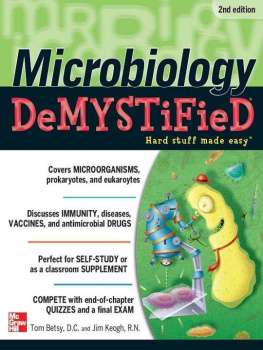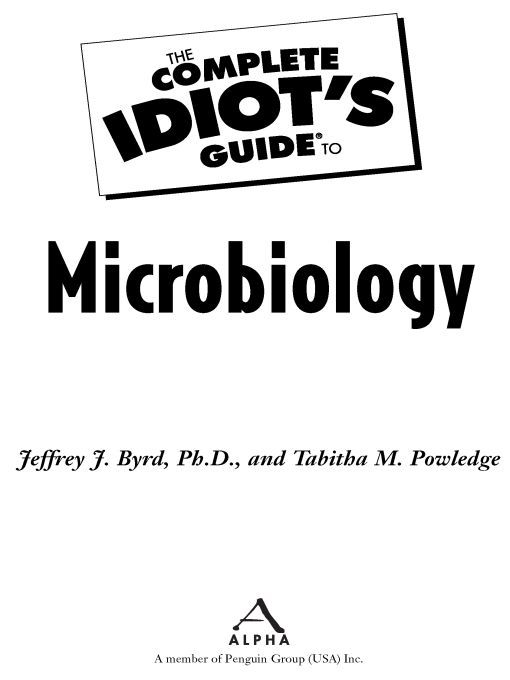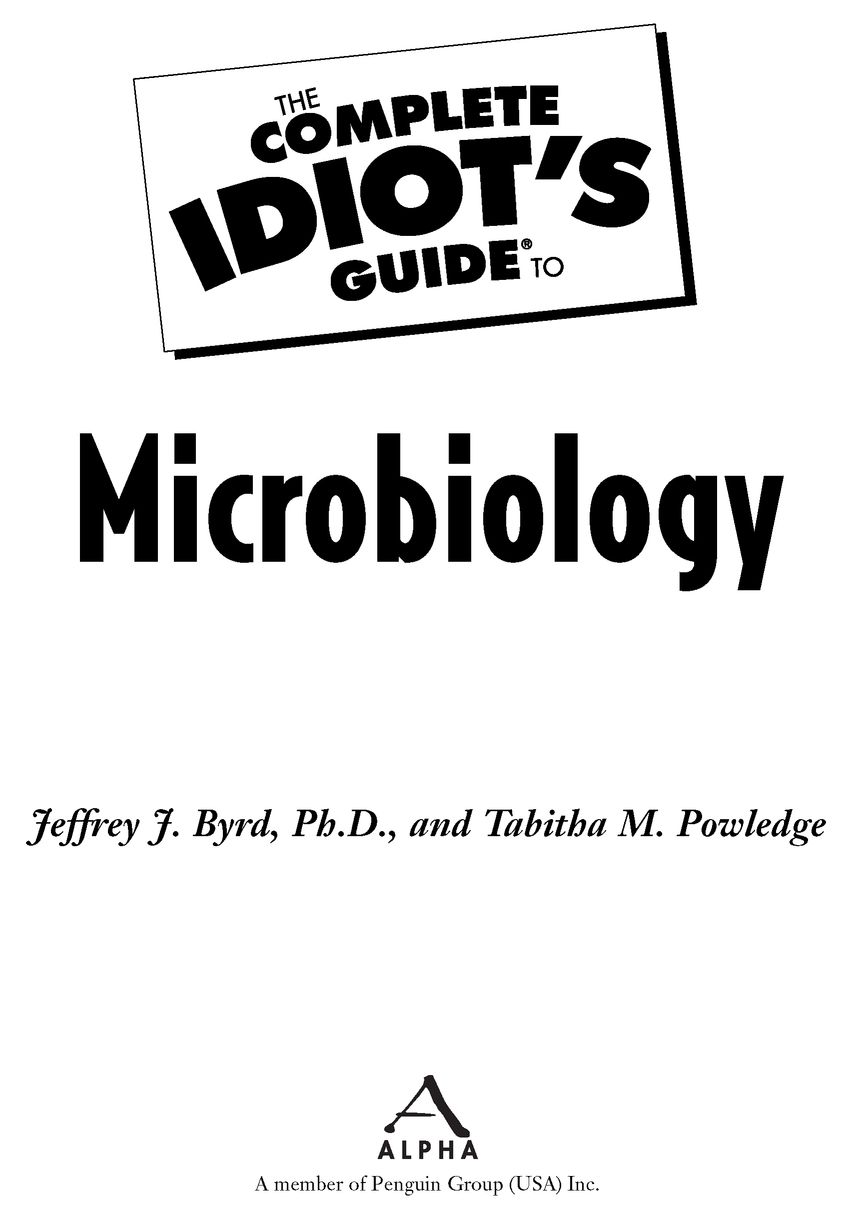Table of Contents
From Jeffrey: We dedicate this book to all those who are about to enter the world of microbiology, either as students or through employment. May you come to appreciate the microorganisms presented in this book, without which life on Earth would be impossible. And to my wife Beth, and all spouses of microbiologists, who are constantly reminded of this fact.
From Tabitha: For Fred, who selflessly managed to hold my hand while doing the cooking.
Foreword
It is often said that seeing is believing. This was certainly true for early microbiologists like Anton von Leeuwenhoek who saw and described a universe of animicules (i.e., microbes) in water-pepper suspensions using a handcrafted microscope. Likewise, Elie Metchnikoff became the father of cellular immunology after observing mobile cells within the transparent larva of starfish and postulating that these cells might play a role in the protection of the host against foreign invaders. The acceptance of microscopic life advanced the idea that microbes were the cause of many human illnesses even diseases such as rabies in which the etiological agent, a virus, could not be visualized even with a microscope.
We are now able to observe the myriad types of microbes with unique shapes, sizes, and structures within their natural communities using powerful microscopes. Other advances in molecular biology provide the means of identifying microbes without growing them, which is important because we dont know how to grow most microbes, and it reveals a picture of the invisible world that is even more complex than ever imagined.
Microbes are essential to life on Earth and a basal understanding of microbiology is invaluable to everyone. People usually equate microbes with devastating human illnesses such as AIDS, some cancers, cholera, influenza, gangrene, malaria, and Dengue fever to name a few. Of equal importance is the role of beneficial microbes in warding off disease; producing foods, fuels, medicines, oxygen; and serving as the chief garbage disposals and nutrient recyclers for our planet. The importance and broad spectrum of subjects make at least a portion of microbiology of interest to nearly everyone. With such important roles in disease, food production, and the proper functioning of our planets ecosystems, microbes will undoubtedly play a pivotal role in the future of this world and perhaps beyond.
The Complete Idiots Guide to Microbiology provides a glimpse into the good, the bad, and the ugly of microbiology; from good wine and life-saving penicillin, to bad breath and acne, to the ugly maladies associated with vicious viruses. You will learn how our bodies fight off infection and how the microbes respond with stealth tactics to go undetected. The jargon and introductory concepts to the various areas of microbiology are provided in sufficient detail to spark the interest without bogging you down with the details. You will learn about algae, archaea, bacteria, fungi, protozoa, and viruses and how some microbes socialize with each other and interact with their hostsometimes even changing the behavior of their host. After reading this book you will see and believe that microbes, even though mostly invisible, are the most important organisms on Earth.
Charles W. Kaspar, Ph.D.
Charles W. Kaspar, Ph.D., is a Professor in the Department of Food Microbiology and Toxicology at the University of Wisconsin-Madison (www.wisc.edu). He earned his doctorate at Iowa State University in 1986. His primary areas of research are in microbial extremophiles, stress tolerance, and the human pathogen Escherichia coli 0157:H7, and he is an author on multiple research publications on these subjects.
Introduction
Please dont be intimidated. Microbes are just about the most enthralling, wacky subjects you can study. If you give them half a chance, we think youll agree.
Dont worry too much about the occasional technical stuff. Microbiology is science, so theres bound to be some technical stuff. But the concepts arent really difficult once you learn the language, and were here to help you with that.
We define new terms the first time we use them, and often remind you what they mean when they come up again. And weve collected all the definitions in one handy place, the glossary at the back, where you can always look something up to refresh your recollection.
A splendid crew of artists has provided explanatory drawings at crucial points in the text. Thats a big help in clarifying the few structures and processes that youll need to know about.
Weve stuck to scientific convention in naming specific organisms. It begins with the Genus name (always capitalized) followed by the species name (never capitalized), and the whole thing is in italics. The first time an organism is mentioned, its given its whole name, but in subsequent mentions, the Genus is shortened to its capital letter: G. species.
See, that wasnt hard at all!
How to Use This Book
Whos afraid of microbes? Lots of people, even though they usually dont need to be. Whos afraid of microbiology? Not you, not with this book in front of you explaining how astounding, spellbinding, and essential microbes are.
Well take you by the hand and give you a guided tour. We wrote it for beginners, and we dont assume any previous knowledge of this subjectalthough if you do know something about microbiology, we bet youll find things here you didnt know. Well take you by the hand and give you a guided tour of the marvels of this invisible world. Yes, there are some technical bits. But we know the lingo, so well translate and make it all clear.
Along the way, youll get to know viruses and bacteria, protozoa and algae, and the fungi among ushow they live, what they do, and how they rule the world even while hidden from view.
Weve divided the book into five sections for easy consumption.
Part 1, Microbes and Microbiology, is Microbes 101. The section introduces you to the tiniest life formsand also to the microbes that are not alive. Meet the bacteria, the viruses, the protozoa, the algae, and the fungi. Also meet the new kids on the block, the recently discovered archaea, a brand-new invisible world.
Part 2, How Microbes Make a Living, is just what it sounds like. Here we give a quick rundown on the chemistry of life, a little about microbial genetics and genomics, cells and cell structure, and how microbes eat and grow and (blush) have sex (although most of them dont, sorry to disappoint you).
Part 3, Life on Earthand on Man, Woman, and Child, explores one of the most intriguing microbial traits: how sociable they are. Microbes are not solitary. They live in communities. In fact, some of them are communities to themselves: microbes inside microbes inside microbes. Well tell you how the immune system works to fend microbes offand how the wily microbes have found ways to evade it. Well tell you about ways of preventing disease and treating it. Andperhaps most fascinating of allwell tell you all about those 9 out of 10 of your cells that arent you at all, theyre microbes.
Part 4, The Infectious Diseases, is an overview. We cover diseases caused by viruses, by bacteria, by protozoa, and by fungi. Youll also learn about diseases lurking in food and water, and about emerging diseases that are worrying public health officials. And finally, the fascinating fact that several chronic diseases that we dont think of as infectious (like heart disease and cancer) can be triggered by microbes.


